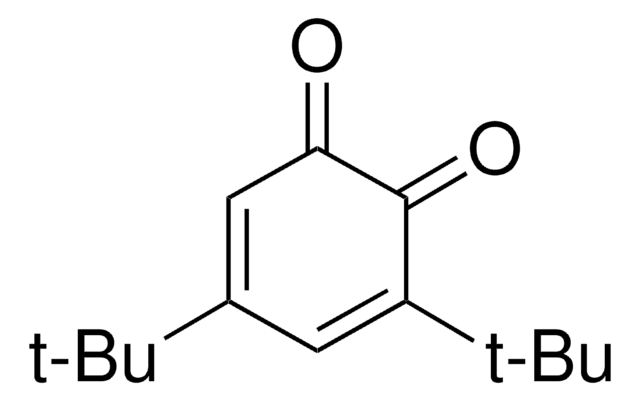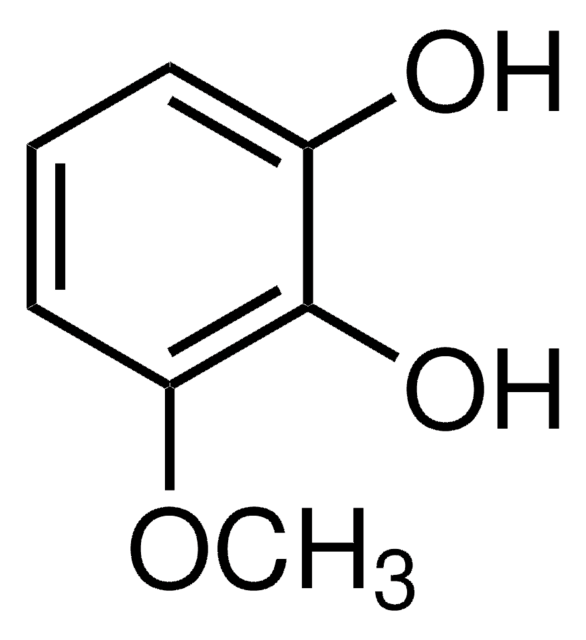D45800
3,5-Di-tert-Butylcatechol
98%
Synonym(e):
3,5-Bis(1,1-dimethylethyl)-1,2-benzenediol, 3,5-Di-tert-Butyl-1,2-Hydroxybenzene, 3,5-Di-tert-butyl-1,2-benzenediol, 3,5-Di-tert-butyl-1,2-dihydroxybenzene, 3,5-Di-tert-butyl-o-hydroquinone, 3,5-Di-tert-butylpyrocatechol, 3,5-Ditert-butylbenzene-1,2-diol, 4,6-Di-tert-butyl-1,2-benzenediol, 4,6-Di-tert-butylpyrocatechol
About This Item
Empfohlene Produkte
Assay
98%
Form
crystals
mp (Schmelzpunkt)
95-100 °C (lit.)
SMILES String
CC(C)(C)c1cc(O)c(O)c(c1)C(C)(C)C
InChI
1S/C14H22O2/c1-13(2,3)9-7-10(14(4,5)6)12(16)11(15)8-9/h7-8,15-16H,1-6H3
InChIKey
PJZLSMMERMMQBJ-UHFFFAOYSA-N
Suchen Sie nach ähnlichen Produkten? Aufrufen Leitfaden zum Produktvergleich
Anwendung
- A reactant to prepare 3,5-di-tert-butylquinone via catalytic oxidation.
- A polymerization inhibitor in the production of monomers such as styrene and butadiene.
- An additive in the synthesis of enantioselective 1,2-oxazinanes, and isoxazolidines via asymmetric nitroso aldol reaction using L-proline as a catalyst.
Signalwort
Warning
H-Sätze
Gefahreneinstufungen
Eye Irrit. 2 - Skin Irrit. 2 - STOT SE 3
Zielorgane
Respiratory system
Lagerklassenschlüssel
11 - Combustible Solids
WGK
WGK 3
Flammpunkt (°F)
Not applicable
Flammpunkt (°C)
Not applicable
Persönliche Schutzausrüstung
dust mask type N95 (US), Eyeshields, Gloves
Analysenzertifikate (COA)
Suchen Sie nach Analysenzertifikate (COA), indem Sie die Lot-/Chargennummer des Produkts eingeben. Lot- und Chargennummern sind auf dem Produktetikett hinter den Wörtern ‘Lot’ oder ‘Batch’ (Lot oder Charge) zu finden.
Besitzen Sie dieses Produkt bereits?
In der Dokumentenbibliothek finden Sie die Dokumentation zu den Produkten, die Sie kürzlich erworben haben.
Kunden haben sich ebenfalls angesehen
Unser Team von Wissenschaftlern verfügt über Erfahrung in allen Forschungsbereichen einschließlich Life Science, Materialwissenschaften, chemischer Synthese, Chromatographie, Analytik und vielen mehr..
Setzen Sie sich mit dem technischen Dienst in Verbindung.












